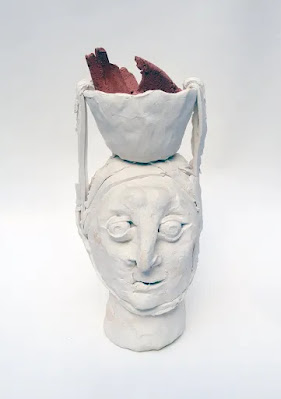Sculpture Studio
Sculpture Courses @ Flagler College. Sculpture I, Installation and Ceramic Sculpture. Laura Mongiovi, Professor.
Translate
Thursday, August 7, 2025
Saturday, May 3, 2025
Thursday, April 17, 2025
Sunday, January 26, 2025
Nicki Green, Artist
Sunday, July 21, 2024
Netsuke (net · soo · kay)
Typically measuring less than three inches high, netsuke are small, wearable sculptures that were fashionable during Japan’s Edo Period (1615-1837). Expertly crafted, these miniature accessories became highly collectable among American enthusiasts in the late 19th century.
Functioning much like toggles or counterweights, netsuke were attached to purse-like boxes called inrō that could be suspended from a sash wrapped around one’s kimono. Featuring an inrō and netsuke connected by a cord and bead, or ojime, the photo at the right shows a complete carrying case. In order to open the delicate stacked boxes of the inrō, the owner of this case would slide the ojime towards the netsuke. The boxes could then be separated, revealing contents such as medicine, tobacco, or small writing materials.
Language source Springfield Museums: https://springfieldmuseums.org/blog/fashion-function-art-netsuke-carving/































